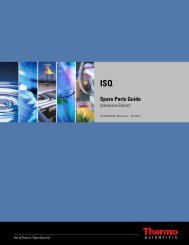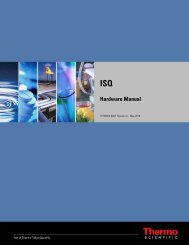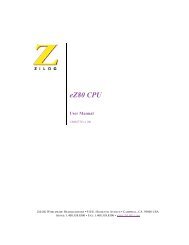ISQ User Guide - Write Frame of Mind
ISQ User Guide - Write Frame of Mind
ISQ User Guide - Write Frame of Mind
Create successful ePaper yourself
Turn your PDF publications into a flip-book with our unique Google optimized e-Paper software.
Running a Sample<br />
Preparing Your Sample<br />
This chapter describes how to prepare a sample and then run a sequence.<br />
The primary goal <strong>of</strong> sample preparation is to reduce the amount <strong>of</strong> unwanted contaminant in<br />
a sample or to increase the reliability <strong>of</strong> sample detection. As a result, you should prepare your<br />
samples to increase the relative abundance <strong>of</strong> compounds you want to analyze and decrease<br />
the relative abundance <strong>of</strong> the compounds you aren’t interested in. Refer to your lab’s standard<br />
operating procedure (SOP) for your particular sample preparation method.<br />
Different solvents are used to dissolve different compounds. Be sure to choose a solvent that<br />
will dissolve the compounds you want to analyze. The solvent should be compatible with the<br />
stationary phase <strong>of</strong> your GC column when making sample dilutions.<br />
Once your sample is prepared, you can transfer it to a sealed vial so that you can inject it into<br />
the GC. It is important to use a sealed vial because you do not want the concentration to be<br />
altered, which is what happens when the solvent evaporates.<br />
Thermo Scientific <strong>ISQ</strong> <strong>User</strong> <strong>Guide</strong> 51<br />
5






